 It’s been just over two months since I started as the interim Executive Director at the Center for Social Sector (CSSL) at UC Berkeley’s Haas School of Business. The title is a mouthful, which I’ve noticed occasionally makes me hesitant to actually talk about what I’m doing. But I wanted to take a moment to talk about it here. Out of respect for the people involved, I won’t be going deeply into the specifics, but I have had some more general observations about “interim-ing” that I'd like to share. The first thing I’ve noticed – and this is not at all revelatory – is that the humans really are the thing. They are the very best part, and simultaneously, the part that makes things tricky. I initially structured my role as interim ED with a proposed scope based on two interviews with the Center’s Faculty Director and Advisory Board Co-Chairs. Over the initial thirty-day assessment phase I was able to check my assumptions and revise the scope to create a 90 day workplan. Most of this assessment time was spent meeting with people: the Center’s staff, faculty and Advisory Board members, with a few alumni calls thrown in for good measure. While I expected to enjoy this exploratory phase, I didn’t fully anticipate how much I would enjoy it. The people have been really wonderful – interested and interesting, genuinely willing to lean in and help, curious, caring and generous. Also, they are hopeful - about the potential for the Center and the value of this transition period. It may reflect a blinding mastery of the obvious, but so far the best part of being an interim has been the chance to meet new people who are committed to something bigger than themselves. My second reflection, and again, not entirely surprising, is that working in a University system is really different. As in, “I have landed on an entirely new planet” different. While being an interim makes this part of the experience manageable, it also makes me feel a keen sense of responsibility to whoever succeeds me. To that end, I’ve found it useful to imagine a specific human as my successor – someone whom I actually know. When I’m making a decision, or having a hard conversation, or thinking about what to do next, it has been extremely useful to think to myself, “Would I feel OK turning this situation over to (let’s call them) Jordan?” Whoever my successor is, they’re going to have to navigate this particular situation. And while I believe this would apply to any situation and in any work culture, being in the University context has made me acutely aware that my job is to do what I can while I’m here to set the next leader up for success. The third and final thing about interim-ing that really stands out is that it feels absolutely essential that I not lose my focus on driving things forward. As an Executive Director, one always feels pressure to keep one’s eye on key objectives, but being an effective interim feels like it requires an even greater degree of diligence. This is not like a design cycle in which one alternates between periods of focus and flare. This is all focus. And it is requiring a level of discipline that feels extra. I've been surprised that while standing meetings with other staff help, the biggest accountability structure has been my bi-monthly meetings with the Board co-chairs. Every two weeks I send them a write up on what’s been accomplished in the previous fourteen days and then we meet for an hour to discuss. These memos and meetings have come to serve as a real forcing function for me - compelling me to check in with myself around where I am against my 90 day workplan and where I need to pay more attention. The CSSL Board operates in an advisory capacity – it isn’t a fiduciary board – so this is a bigger ask than I think has been historically made of the chairs. I’m pretty sure they are experiencing it as a lot, but I’m also confident they recognize how helpful our conversations are to the process. I have definitely come to see my success in this role in terms of the momentum I am able to build - and then hand over – to my successor. Working in this way with the board co-chairs feels essential to building and maintaining this momentum. Finally, one of my current 90 day plan goals is to have a revised job description for the Center’s Executive Director position by the end of the May, kicking off the next phase of work which will focus more on coordinating the search. I'm looking forward to sharing this job description with all of you. I still have a lot to learn, and I’m genuinely excited - and curious – to see where this adventure takes me next. Thanks for joining me - and please don't hesitate to reach out if you're exploring interim-ing yourself, or have any other questions or suggestions.
0 Comments
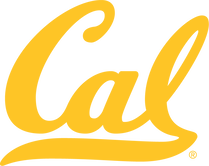 Today is my first official day as Interim Executive Director for UC Berkeley’s Center for Social Sector Leadership (CSSL), within the Haas School of Business. CSSL supports leadership opportunities for students interested in achieving social impact. I’ve collaborated with the Center over the past few years – as a nonprofit CEO whose organization benefited from the Bears on Board program and more recently teaching a course on Social Entrepreneurship for undergraduates. Nora Silver, the Center’s founder and Faculty Director, had reached out to me about serving as the Interim ED after spotting my LinkedIn post announcing my availability as an Interim leader, post-completion of Third Sector’s Interim Executives Academy. I’ve been thinking a lot about “interim-ing” as a theoretical construct, so it is both exciting and a bit nerve-wracking to actually begin doing it. I am hyper-aware of how the role is distinct from a traditional ED job and curious to see how I do in resisting old patterns and simply falling into doing what I know. I am hopeful my prior experience will be useful, but concerned that as I bring that to bear, I do so in service of building CSSL's organizational capacity. One of the books that sparked my interest in interim roles was Arthur Brooks's From Strength to Strength: Finding Success, Happiness and Deep Purpose in the Second Half of Life. I am a somewhat unlikely Arthur Brooks fan, and yet the book really captured my imagination – specifically his explanation of the psychological concept of crystallized vs. fluid intelligence. Since stepping down as CEO at Playworks in 2020, I have worked on a number of interesting and engaging projects, and I was deeply appreciative of the flexibility to be present with my father as he was dying and now, to support my mom in the aftermath of that. Over the past several months, I began feeling the need to be more deeply connected in the world and to more concretely contribute. Brooks's book offered vocabulary about those feelings - namely a pressing need to be more useful. I’ve had many conversations over these past couple of years around leadership transitions and succession planning. We're in a moment of upheaval for the nonprofit sector with a record number of founders retiring and a much-needed focus on increasing BIPOC leadership. Transitions are, by definition, periods of great vulnerability, and these shifts in our sector both deserve and require a level of attention and intention that set new leaders and organizations in transition up to succeed. It is simply not an option to do this half-heartedly and then shake our collective heads in disappointment that it didn’t work out. Today, I am setting out to be an interim ED at a center dedicated to understanding social sector leadership with an eye to learning, amplifying the potential for good in the transition process, and connecting with others who are interested in doing the same. I’m bound to make some mistakes along the way and am hoping to have some fun, too. I invite you to connect, follow along and make suggestions. I am convinced that this is an important capacity for our sector to master and that we are most likely to achieve that mastery together. Wish me luck – and Go Bears!  I fly to Los Angeles tomorrow and from there, my partner Elizabeth and I will fly to Melbourne to officially kick off her 8 week sabbatical from Playworks. Elizabeth has worked at Playworks for going on 18 years and she is among the first to benefit from Playworks’ new policy, giving employees who have been there for over 15 years an 8 week respite, and those who have been there over 10 years a 6 week break. It is thus that I find myself becoming what I have come to think of as a Sabbatical Spouse. I am along for the ride, and while it will likely be a defining experience of my year (that has been my experience of international travel), I am not the master architect. I am a little surprised by how delightful I am finding it to be metaphorically riding shotgun. In so many ways, the pressure is off. This is not my bucket list. I am also aware that even so, this experience, this trip, will affect me profoundly. That, even from the passenger seat, there is a lot to see and that being in charge of the maps and the snacks, while not as important as actually driving, is still essential to the quality of the trip. Elizabeth wrote an excellent piece about her thoughts on the importance of this sabbatical. She talked about why it was important for the organization, and she talked about her curiosity to see how things would be different upon her return. She also talked about how much she needs this break – that the stresses of these past three years have been cumulative and that only in forcibly removing herself from the context – including the definitive, albeit temporary, shutdown of her Playworks email – does she stand any chance of restoring some sense of balance. I realize that I need this time as well. My father is dying. He has been dying for three years, and I have been dutifully daughtering throughout this time, visiting for 5 or so days monthly from California. I have also been here with my mother for these past two weeks, setting up hospice and arranging for night nurses. I had thought that perhaps my father would die while I was here and that I could be present to support my mom emotionally, but also to deal with all the logistical demands that death triggers. Fate would not have it. I have tried to do as much in advance as possible, dancing on the line between the practical and the macabre. I have arranged for direct cremation and picked out the plain maple box for his ashes. I have written a first draft of his obituary. I have filled out all but his age and the date of death on the death certificate. My father’s 85th birthday is a month away. History is usually written by the drivers, or at least, it is written about the drivers. But it occurs to me as I head off on this odyssey from the vantage of the sidecar, that this supporting perspective is too rarely documented. There’s Alice B. Toklas, I suppose, but I am hard-pressed to think of others. My plan is to write about this journey as a Sabbatical Spouse to both document and make sense of the experience. I suppose I want to write about the trip so as to ensure that I pay attention along the way. The goal is to write weekly, and I have yet to determine how, or if, I will share these reflections. I need to see where they go, and I need to figure out how to do this while still respecting the primacy of Elizabeth’s experience. One final thought. I have been worried that the backdrop of my father’s dying might cast a pall on Elizabeth’s experience, somehow diminishing this well-deserved retreat. Her attitude about the sabbatical, though – her resolve that this be an experience with no goals or expectations – has created the space for me to ride along with confidence that all she requires of me is my presence, in whatever form that takes. I am grateful, and hell-bent on not squandering this precious gift of time, companionship and adventure.  For our last class of the semester, Deb Jospin joined to discuss the role of Boards in leading social entrepreneurial efforts, the stages of board development and the values in having a strong board. As with the other speakers, I asked Deb to begin with her own journey, and she described her early work helping to launch the Corporation for National and Community Service and as the Director of AmeriCorps. She also talked about her work as a consultant, initially as business partners with Shirley Sagawa with whom she co-authored The Charismatic Organization: Eight Ways to Grow a Nonprofit that Builds Buzz, Delights Donors and Energizes Employees (and, as a bonus, in which Playworks is highlighted!) In turning to her work as a consultant, Deb described her work advising boards across the developmental spectrum – from Founders Board to Governing Board to Institutional Board. She also described her own experiences serving as a board member and trustee and the learnings and insights those opportunities provided. In particular, she talked about the importance of clarity in board roles and creating a culture of belonging and inclusion as critical to building an effective board. One of the students in the class is in the process of helping to establish a new board for an emerging organization, and it was great to hear Deb talk about the benefits of building a founder’s board as an essential first step and not as something problematic or ‘less-than.’ A founders’ board, Deb explained, can be a way to learn and grow, with board members contributing more meaningfully to the day-to-day work, while offering more forgiving support in the early days when the learning curve is steep. Looking at the different types of board as developmental, all capable of having both functional and dysfunctional versions, presented the students with a more realistic understanding of what it takes to have a board that is an authentic partner in the work. A recurring theme from the course has been that as an organization grows – whether for profit or non, it needs different things, from talent to infrastructure to functional expertise. The board is a critical partner for adding talent to an organization and thus best able to serve the organization if it shifts and grows as the organization does. Deb summarized the value of having a strong board as: 1. ensuring that the organization has the resources it needs; 2. offering support and advice to the leadership; building credibility; 3. bringing a diversity of experience to the table; 4. opening doors to funders, community leaders, the media, and others; and, bailing the organization out when (not if) it stumbles. How much time it takes The strike is still going on as I write this, and we held class in a hybrid fashion, which is not my favorite. The students who did show up in person and I had a funny end of class, where we all agreed that the semester had gone quickly, and that it felt weird for it to end with just a few of us in person. I had written in my first post about the class that I suspected that in committing to doing this that I would, at some point, have that karaoke feeling where you still have 3 minutes left of the song and you are filled with regret at having decided to get up on stage. I never did. To the contrary, I found writing about the class really helped me to tease out throughlines and themes and contributed to my enjoyment of teaching. Continuing with the idea of committing publicly to ensure my own accountability, my plan is to write one more ‘blog’ about the students’ final presentations and assessments (scheduled December 14-16) and the class overall as a conclusion, and to include that, along with all the preceding blogs, in a free ebook that I will be publishing on my website. Not sure how long that will take me, but that’s the plan. Many thanks to all of you who have been reading along this semester – I’ve appreciated your comments and notes. 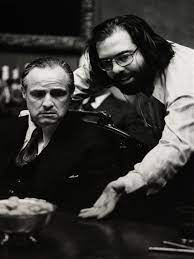 I originally invited Dr. Sanjeev Arora to speak to my social entrepreneurship class to include a focus on innovation in the health space (and because he’s kind of amazing), but as I listened to him speak to the class this past Monday, I was struck by how much his work is actually more broadly about building powerful networks to bring about social change. I have been spending a lot of time lately thinking about the possibility of democratizing social change through digital networks because of my work with the Dublin-based nonprofit organization ChangeX, so felt a bit silly for not recognizing this before Sanjeev’s remarks. Sanjeev began his work as an expert in Hep C, carrying a heavy load in his practice at the clinic he led out of the University of New Mexico. He told the story of a patient, a single mother who had had HEP C for 8 years, delaying treatment because it required making twelve trips to Albuquerque - something she couldn’t really afford with her two children and the demands of her work schedule. This patient had only decided to come to the clinic when she did because the pains in her abdomen had become so severe that she couldn’t function normally. That pain, Sanjeev explained, turned out to be cancer of the liver and the woman died not long after. Sanjeev was left asking himself the question: why did this woman have to die of a disease that I knew how to treat? In response to that question, Sanjeev launched Project ECHO, an effort to ensure the possibility of the “right knowledge at the right place at the right time," thereby democratizing expertise. While I had expected Sanjeev to talk more about the medical implications of his work, his emphasis was much more squarely focused on the importance of force multiplication, and specifically on four key ideas: Amplification - using technology to leverage scarce resources; Best practices - reducing disparity by creating access to expertise; Case-based learning, also referred to as ‘All Teach, All Learn’ - mastering complexity by building community among practitioners and sharing knowledge through application to real scenarios; and, Data - monitoring outcomes and sharing results to increase impact. Sanjeev also spoke to Project ECHO’s business model and his insistence that the services provided be made available for free. Involvement with the network requires a significant commitment of time and engagement, and Sanjeev has committed to raising his operational costs through philanthropy. His support has come from a wide variety of sources, including Zoom, which provides unlimited free access to participants thanks to an early meeting with the founder, Eric Yuan. The results of the ECHO approach, democratizing expertise and unleashing eight hundred and forty Project ECHO hubs across the globe, have been extraordinary. The work of Project ECHO has been evaluated in some of the world’s most prestigious medical journals, including the New England Journal of Medicine, and resulted in over 500 peer-reviewed publications. Having begun with a focus on Hep C, Project ECHO networks now address over 75 different diseases, and the work has also extended to the adjacent field of education. Sanjeev concluded his remarks with a slide picturing the director Francis Ford Coppola and the actor Marlon Brando, and Sanjeev told the story of Coppola asking Brando about what it was going to take to make the best possible movie. Brando’s response, Sanjeev said, was to “get everyone to make the same movie.” Sanjeev’s decision to give away all of Project ECHO’s work for free reflects an effort to address what Sanjeev believes to be the key obstacle to peace: inequity. As he explained, “All innovation, once it goes into business mode, systematically denies low-income people. There is no business model for the very poor.” Removing the profit motive in the distribution of expertise is essential in Sanjeev's mind to ensuring that we are able to metaphorically making the same movie. As a result of the strike, I elected to hold this class in a hybrid fashion, with students attending both online and in-person, and most of the remote students elected to not be on screen. Sanjeev noted that in Project ECHO sessions they don’t allow participants to engage off-screen because they believe relationship and connection to be essential to learning, and because the network is powered by engagement. It may be cost-free to participate, but you have to show a willingness to engage to be a part of Project ECHO. I had not asked my students to be on-screen for Sanjeev’s class, but I am asking that they join that way for this coming week. After Sanjeev’s talk, we discussed the pivots we are making as a class given the ongoing nature of the strike, specifically shifting to hybrid teaching and learning for the last two classes and changing the final presentation from an in-person presentation to video submissions to be assessed through virtual groups. For this coming, final week of class, we will be joined by Deb Jospin talking about the role of Boards. Readings for the class include “Board Roles and Responsibilities” The National Council of Nonprofits; “Exploring the Association Between Board and Organizational Performance,” William A. Brown, Nonprofit Management and Leadership; and at Deb’s recommendation, we are also reading The Board Source’s Twelve Principles of Governance that Power Exceptional Boards, which I can’t share with you, but highly recommend!  For our 11th Social Entrepreneurship class, I had a conversation with Anne Wintroub. While ostensibly focused on corporate social responsibility (CSR), we ended up covering a lot more ground. I’ve known Anne for a while and through my work with Substantial had the opportunity to participate in the Accelerator that Anne launched under the auspices of the AT&T Foundation. (Sidenote, this accelerator has taken on a fresh new life under the guidance of Sandro Oliveira and Amy Mandrier through Project FoundED and is worth checking out, especially if you are an edtech founder or funder…) Anne described her journey for the students, a career, as she put it, that she “didn’t even know existed” when she was an undergraduate. I particularly appreciated Anne’s perspective on how the space has changed dramatically during her time working in it, mirroring much of the change in the larger social entrepreneurship space that we have been discussing as a class. When, for example, she began working on developing the accelerator, the opportunities all looked a lot like Y Combinator. Anne’s perspective that start-up for-profits and nonprofits had more in common than not, and that the resources and support of a corporate entity like AT&T, when designed to be flexible and risk-tolerant, meant that they were able to develop something that reached changemakers who were being overlooked by those other early accelerator models. Since then new models have been developed – she mentioned Fast Forward and Camelback Ventures – recognizing as Camelback puts it that “Genius is equally distributed. Opportunity is not.” In response to a student’s question about how corporations choose their areas of social investment, Anne described the maturation of the space – an evolution from focusing more broadly on good works to a process of identifying social impacts directly relevant to a corporation’s outputs, including an awareness of sustainability, building responsible supply chains and employee engagement. In this way, she described, CSR has become more integral to business outcomes and as a result, core to business outcomes and thus more valued. I’ve noted that this year’s students are particularly interested in the intersection of for-profit business and social change, and I think they appreciated Anne’s very direct acknowledgement of the compromises involved in CSR. Starting her career in public libraries and public broadcasting and then shifting to CSR afforded Anne a deep appreciation for the privilege of investing in others’ work, balanced by a commitment to being radically transparent. For Anne this has meant talking honestly with her teams when decisions or actions were taken that she might not agree with and, when her vision of the work no longer aligned with the larger corporate vision, deciding to move on. More recently, Anne’s work has led her to lululemon where she has been involved with standing up their new Center for Social Impact, working to disrupt inequities in wellbeing globally. Anne’s description of working with this global team – 29,000 employees distributed around the world - conveyed a complex organizational structure designed to ensure a high degree of decentralized decision-making respecting local knowledge and the importance of distributed leadership. One final topic that we discussed, and that I wanted to call out, was that in introducing herself Anne noted that she is the Board Chair for 826National. I asked her to tell the students a bit about the organization and her board experience, and I noted to both her and the students the significance of her referencing this leadership role as a key part of her identity. It made me wonder how often board members actually do that, and when they do it, and why. I suspect that some of my students may indeed end up serving on boards and I hope that as a result of having taken this class they might approach board service as something that they would incorporate more intentionally into their identity. After Anne spoke, we briefly discussed the UC Students' strike (class attendance was at about half), and the students broke into their new groups to talk about assessing their classmates' pitches for the final. We will be pivoting slightly for the final couple of weeks - offering class virtually and moving the finals process online - because the strike continues and there have been some other scheduling challenges. This week we will be joined by Dr. Sanjeev Arora and the readings include: “Social Enterprise is the Best Medicine for Global Health Challenges” Kielburger, Craig and Marc, HuffPo Project ECHO: Rising to the Challenges of Covid-19, MacArthur Foundation “How Health Care Systems Can Reduce Gun Violence, Here’s What Kaiser Permanente is Doing” Lee, Bruce, Forbes Finally, I wanted to share the note that Melissa sent to the students about her decision to be a part of the strike (and the link to the presentation on the UAW undergrad teach-in 2022): Hi everyone, I am writing to you to let you know that I am choosing to join the UC Academic Workers’ historic unfair labor practice strike which begins today. This was not an easy decision for me to make. I care deeply about supporting your learning in my role as your Graduate Student Reader, AND also recognize that taking steps like striking are crucial in creating the systemic change that is needed for UC Academic Workers to receive equitable compensation. Why strike? The purpose of the strike is to be disruptive. Student workers are not striking to hurt you or abandon their job responsibilities. Rather, striking is meant to send a message to the University of how quickly it will collapse as an institution when it fails to center the needs of the very workers it relies upon so heavily to function. What is the magnitude of the issue? Nearly 48,000 UC Academic Student Employees (including GSIs/GSRs), Academic Researchers, Postdocs and Student Researchers across California's 10 UC schools are going on strike starting today in response to the UC's ongoing unlawful bargaining behavior. This is the largest student worker strike in our country's history. Where can I learn more? For more information on the strike and the reasons behind it, read through this deck. To sign a letter of solidarity to support the strike, click here. How does this impact me? I will not be physically in class at least for the first week of the strike - I plan to review my decision of continuing to strike if it continues beyond the first week. I will also be withholding grades for assignments you submit. Jill has been informed of my decision to join the strike, and will manage class accordingly. In closing: Striking is a sacrifice for everyone. The hope is that the coming days and weeks of disruption will be a short-term pain point in comparison to the fair, equitable contracts that we can win for tens of thousands of student workers both now and for years to come. An unprecedented moment like this may not come again in our educational careers. Let's be amongst those who can look back and say we helped uplift the cause for student workers' rights in this country rather than be those who remained on the sidelines. In solidarity, Melissa Kong 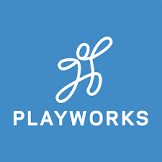 Elizabeth Cushing joined our class this past Monday to talk about fundraising and, happily, I found having my spouse join the class to be surprisingly enjoyable. We like working together (which I realize is not everyone’s jam) and I don’t think there is anyone from whom I have learned more about fundraising, so it was great to get to watch her with the students. Not sure exactly what the students thought of it, though they seemed more engaged than usual. Elizabeth used a myth-busting framework (one that I had borrowed from her to structure an earlier discussion in the course) to talk the students through both her own thoughts on fundraising, as well as Playworks’ experiences of raising money in our efforts to scale. While her talk covered a number of the more technical aspects of fundraising – how and when to talk about the challenge addressed, the percentage breakdown of giving sources, leveraging earned revenue in accessing philanthropy – the remarks that engaged the students most were largely philosophical: Who do you say no to? How does an organization’s values impact decision-making, and how does this in turn shape culture? It was an interesting and important conversation, spinning off of the questions around accepting corporate donations. When asked about the idea of Playworks accepting money from tobacco companies, there was a universal cringe. Cannabis money? Some thoughtful head shaking. Alcohol? Soda? There were questions about what factors the staff and board used to make these decisions, and perhaps mild surprise to learn that our employees’ feelings on the subject were a significant consideration. There were also questions about the motivation of companies - such as those manufacturing tobacco and soda – to donate to an organization like Playworks, and a discussion about the most obvious and nefarious impulses as well as a more nuanced recognition around business needs, such as employee retention, and more genuinely altruistic instincts. Elizabeth emphasized the importance of authentically listening in her remarks and modeled it in her discussion with the students. She talked about emotion and storytelling as key to fundraising, and, of course, included both of those in her presentation as well. Later in the evening over dinner, Elizabeth asked me what I thought the students were actually learning in my class. It’s a question that I’ve wondered about a lot, both in designing the course, and also in these weekly musings that this blog has afforded. While I would be thrilled if some of the students opted to become social entrepreneurs, or to work in the larger ecosystem of social entrepreneurship, I think my biggest desire is that the class is offering up some insights about empathic leadership and changemaking that can be applied in whatever they pursue. I don’t think that’s what a lot of people associate with raising money, but I have come to believe that in operating in this capitalist society, raising money in a way that is directly tied to my values is essential to achieving the change that I seek. After Elizabeth spoke, we discussed the week's readings and one 'watching'. If you have not ever watched it, I highly recommend Anand Giridharadas’ talk “The Thriving World, The Wilting World, & You” which ultimately led to his book Winners Take All: The Elite Charade of Changing the World. The students also submitted their self and peer assessments for class participation for the past month which asked them to reflect on the questions: Did you/they do the readings? Did you/they contribute to helping a classmate understand the material? Challenge their/your understanding? Bring a different perspective to the conversation? Did you/they contribute meaningfully to the project work? Did you/they lead in the project work? If someone were starting a business, would you/they want them/you on your/their team? Why? (Who knew you could turn possessive pronouns into a game!) This week we will be joined by Roger King to talk about scaling and the readings include: “Going to Scale,” Bradach https://ssir.org/articles/entry/going_to_scale “Why Proven Solutions Struggle to Scale Up,” Deiglmeier & Greco https://ssir.org/articles/entry/why_proven_solutions_struggle_to_scale_up Creating High Impact Nonprofits, Heather McLeod Grant and Leslie Crutchfield https://ssir.org/articles/entry/creating_high_impact_nonprofits Four Strategies for Large Systems Change: https://ssir.org/articles/entry/four_strategies_for_large_systems_change 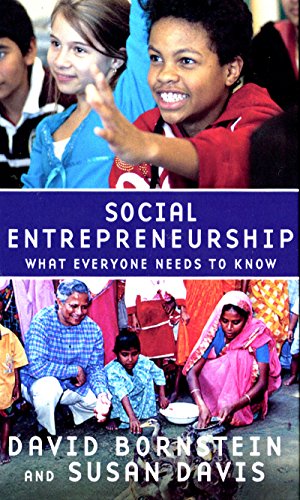 I am fond of telling the story about how shortly after Playworks was awarded a $4.4 million grant from the Robert Wood Johnson Foundation to scale our operations (and officially blowing our collective minds and sending us into a more-than-mild ‘now what?!?’ panic), I got a follow up call from our program officer informing us that we would also be receiving an additional $400K in investment in our communications that would be managed separately by the foundation to work with an outside firm. I’m a little embarrassed to admit that at the time I was more than a little annoyed by this. In fact, my immediate reaction was, “FOUR HUNDRED THOUSAND DOLLARS ON A COMMUNICATIONS FIRM?!? DO YOU KNOW HOW MANY SCHOOLS WE COULD SERVE WITH THAT MONEY?!?” Turns out, I was wrong. That money was one of the best investments Playworks (then Sports4Kids), ever made - or had made in us - because it fundamentally changed how we operated, integrating communications into our work both programmatically and operationally, and thus enabling us to reach measurably more kids. It made us more effective as an organization, and it extended the reach of our programs. Internally, it also made us much more aware of the importance of creating visibility into how decisions were made – an especially important communications capacity for a growing organization where the rate of change is rapid. To talk about the power and import of communications to social entrepreneurship, David Bornstein joined our class. David’s perspective on social entrepreneurship is a particularly interesting one because before he officially came out as one, he studied and wrote about them, authoring a number of important books on the subject, most notably The Price of a Dream and How to Change the World. He and Susan Davis also authored one of the best textbooks on the subject, Social Entrepreneurship: What Everyone Needs to Know. David described his journey, starting out in computer science and pivoting to journalism, and then traveling to interview social entrepreneurs around the world. David defined social entrepreneurship as bringing people together in new ways to solve the most vexing challenges, emphasizing the importance of being open to new configurations as key to identifying solutions. One of the comments that he made that stood out to me – and to the students – was that looking back on that period of time and the end product that was How to Change the World, David observed “I probably wouldn’t write the same book now.” One of the students asked about that comment later in our conversation and David explained that his writing at the time was heavily influenced by the then-popular narrative focusing on the singular, heroic leader. His own work launching and leading an organization, Solutions Journalism, has convinced him that the true story is really about the power of teams and networks. David talked about the work of Solutions Journalism, and in response to a student question about the prevalence of disinformation and polarization, David offered a very hopeful analysis, emphasizing the opportunity for good that exists in working at the local level. Looking at the three points of entry for their work – local, national and social media – David maintained that the possibility of re-building trust was greatest through relationship building between local communities and their local news sources. When journalists are willing to make the effort to understand the challenges facing their communities and to report on interventions from other communities that had been successful in addressing those challenges, David maintains that a shift becomes possible. At the national level, and on social media, David described the pressures as favoring what he termed “conflict entrepreneurs,” monetizing fear and resentment, and referenced Reed Hoffman’s Seven Deadly Sins Framework (“Social networks do best when they tap into one of the seven deadly sins. Facebook is ego. Zynga is sloth. LinkedIn is greed.”) David closed his talk with a reflection on the power that stories have to change our lives, to create, as he put it, “the chance to flight simulate other options.” He invited the students to consider deeply what made them tick, and to cultivate a self-awareness around work that enabled them to pursue opportunities where they found “not only a place to be effective, but a place to be happy.” After David’s talk, I walked the students through last week's midterm assessment, reflecting back some of their responses and offering my own. The students then broke into groups to discuss the films they watched. I asked each group to prepare a 90 second “review” to share with the class. Two groups watched "Just Mercy", one group watched "Dark Waters", one watched "The Boy Who Harnessed the Wind" and one watched "On the Basis of Sex". The films were generally well-received by the students, though the emphasis on RBG’s personal life (and the minute-long makeout scene with Armie Hammer) frustrated the students who watched "On the Basis of Sex". "RBG" was held up as a better alternative, leading to a discussion of the fact that "On the Basis of Sex" garnered $38.8M in box office receipts compared to (wildly successful by documentary standards) $14.4M grossed by "RBG". Next week we will be talking about fundraising and joined by Playworks CEO, Elizabeth Cushing. Readings for next week include Kim Klein, Is Social Justice Fundraising and Oxymoron https://www.opendemocracy.net/en/transformation/is-social-justice-fundraising-oxymoron/ Making Big Bets for Social Change: https://ssir.org/articles/entry/making_big_bets_for_social_change And watching: Anand Giridharadas: The Thriving World, The Wilting World, & You https://www.aspeninstitute.org/videos/anand-giridharadas-thriving-world-wilting-world-you/ 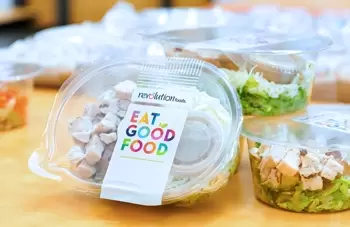 When Nora Silver first asked me to teach the Haas undergrad course on Social Entrepreneurship, I have to admit that I was only thinking about it in terms of nonprofit organizations. I must have inadvertently revealed this bias in a comment, because I distinctly remember Nora correcting me. “No, no,” she said. “This course is intended to cover social enterprise more broadly.” This aspect of the sector is of deep interest to my students and possibly more top of mind for many of them than the nonprofit approach. I have wondered if that was because it gets more media coverage and is more likely to be in their realm of direct experience, or if it’s because it is more appealing to them as a potential career path. In any case, teaching this course has compelled me to learn more about social enterprise more broadly, and by extension, to think more critically about how market forces impact the entire domain. Kirsten Tobey, co-founder and Chief Impact Officer at Revolution Foods, joined the class this past week to talk about social enterprises, B Corps, Public Benefit Corporations and Rev Foods most specifically. Having Kirsten speak to a class at Haas is always profoundly inspiring because she and her co-founder literally launched their business from the buildings where we meet as part of a class taught by Will Rosenzweig on Social Enterprise. Her description of raising seed money, their early partnership with Whole Foods, and their transition from being a C Corp to a B Corp to a PBC makes the whole experience seem both imaginable and real, while being detailed and business-nerdy in a pitch perfect way. The Rev Foods story is also an excellent case study for an exploration of social enterprise because of the very real challenges they have encountered in wrestling with the tension of balancing impact and profit. While wildly successful by most measures (and admittedly, the measures that I find most compelling), the company has yet to achieve profitability. From experimenting with everything from food trucks to vending machines to Consumer Packaged Goods (CPGs for those in business school world) to acquisition, Rev Foods has been both bold and creative in their efforts to identify models that work best for their customers. Kirsten’s story also paints an interesting counterpoint to the narrative that our other speakers have shared, with the for-profit structure creating access to capital markets simply not available in the nonprofit realm. This was a determining factor when Kirsten and her co-founder, Kristin Richmond, elected to launch as a C Corp. A food business is inherently capital intensive and not something, as Kirsten points out, that one can easily bootstrap. But venture financing comes with costs, from giving up ownership to creating financial runways that can distract entrepreneurs from the importance of building business models based on sustainable financials. The students asked some great questions about the larger context of the business, and I was interested to hear Kirsten speak to the history of school lunch in America – from its origins as an effort to address post World War II concerns about food insecurity and the ability to recruit soldiers (weirdly mirrored by more recent military concerns about recruitment efforts being impacted by growing obesity rates) and its development as an element of the federal agricultural subsidies program. Delightfully, one of the students noted that he had been the beneficiary of Rev Foods as a student and that it had contributed to his interest and appreciation of healthy foods. After Kirsten’s remarks, we had a pop quiz of sorts – not graded, but I wanted to have the students respond to some questions that I felt reflected some of the key takeaways I wanted them to have so far in the course. I have pasted the six questions from this Midterm Assessment below. Afterwards I asked the students if they were surprised by the questions or if there were any questions that they thought I should have included. One student suggested asking if they had any outstanding questions or things they were curious about, and I plan to add that question in future years. For this week we will be joined by David Bornstein to talk about the importance of narrative and narrative shifts and the students are watching a movie of their choosing about a social entrepreneur/innovator. I suggested four: Dark Waters (2019) The Boy Who Harnessed the Wind (2019) Just Mercy (2019) On the Basis of Sex (2018) We’re also reading “The Secret to Better Storytelling for Social Change: Better Partnerships”: https://ssir.org/articles/entry/the_secret_to_better_storytelling_for_social_change_better_partnerships# Midterm Understanding Assessment 1.What is social entrepreneurship and how does it differ from/relate to nonprofit organizations more broadly and social enterprises specifically? 2.What did Marshall Ganz mean when he said that social enterprise was not social change? 3.Explain the idea that our systems – education, healthcare, voting - are not broken, they are operating exactly as designed. Do you agree/disagree? Explain your position. 4.When speaking to our class, Willy Foote referenced Bryan Stevenson’s four steps to change the world: get proximate, change the narrative, stay hopeful and put yourself in uncomfortable places. What do you think that means? Can you offer examples? 5.Who owns a nonprofit? 6.If you had been on the Central Asia Institute’s Board of Directors, do you believe you would have done something different from what they did? If yes, what would you have done?  One of the things I’ve appreciated most about my affiliation with UC Berkeley’s Center for Social Sector Leadership has been the opportunity to engage with organizations and individuals working in the democracy entrepreneurship space. From incorporating the topic in this class to experimenting with a fellowship exploring the infrastructure challenges facing some of these organizations and leaders last Spring, working at the intersection of democracy and innovation in this moment when our democracy is under threat has been a buoying experience. Democracy entrepreneurship is an emerging concept. Essentially it is the idea that there are people bringing an entrepreneurial mindset to the work of democratic reform. Like social entrepreneurs – but different in some significant ways – these organizations operate in an ecosystem of funders, peers and organizational knowledge that both contributes to and hinders the ability of these groups to effect lasting change. Not just about solving problems, democracy entrepreneurship involves countering a well-funded opposition, which directly influences how these operations must be designed, funded and led. Most traditional definitions of social entrepreneurship don’t include work in the area of political reform, many specifically excluding activism, but I have included a discussion of this work both because of its importance in this moment and because looking at how organizations are applying an entrepreneurial approach to democracy reform provides a powerful context for exploring social entrepreneurship more broadly. Yordanos Eyoel, the founder of Keseb, joined the class to talk about her work both supporting democracy entrepreneurs and as one herself. Prior to launching Keseb, Yordanos led New Profit’s Civic Lab, the first nonpartisan venture philanthropy initiative in the U.S. to invest in innovative solutions building civic trust and a strong civic culture in America. Yordanos began her talk for our class with an overview of the myriad existential crises we’re facing – climate change, pandemic and threats to our democracy - but she was quick to point out that in the face of these threats, there are also incredible positive things happening. Citing the work of Nossas in Brazil, Yordanos insisted that “paving a path toward a more inclusive model of democracy” requires understanding the drivers of democratic regression. She also emphasized that while US Democracy has declined sharply in the past decade, this decline reflects an enduring pattern that, as the nonprofit group Freedom House has reported, is both reflective of, and a contributor to, the larger global decline. The organization she founded, Keseb, was established to fill a gap in what Yordanos saw as an international perspective on in addressing the challenges facing pro-democracy organizations. Working with groups and leaders in the US, Brazil, India and South Africa, Keseb is building a global entrepreneurship ecosystem of pro-democracy entrepreneurs, activists, funders, and scholars to advance inclusive democracies. Yordanos left the students with three thoughts on what they might do to support these organizations:
After Yordanos’ talk, Melissa (our class’ graduate student assistant) shared a video presentation created by the Native American & Indigenous Business Association at Haas in honor of Indigenous People’s Day (I was surprised that Cal doesn't honor the holiday, but later realized that the federal holiday recognized is actually Columbus Day, so I suppose it's complicated). Melissa also shared a list of resources with the class including this primer for professors created by the Native American Law Students Association on including land acknowledgments. The rest of the class was spent with the students self-organizing into new teams for the next assignment – a multimedia (podcast, blog series, website – it’s really their choice) presentation that dives more deeply into a topic of interest from the class or looks more closely at a social entrepreneur and their organization - and Lee Drutman’s “If America Had Six Parties, Which Would You Belong to ?” quiz that appeared in the New York Times special insert Snap Out of It America back in November 2021. For anyone interested in reading more about some of the work and ideas in democracy innovation, I highly recommend checking it out. I have often thought that just making one’s way through the supplement would be a great basis for a course on the subject. (And if anyone is doing this already, or decides to take it on, please let me know!) This week we turn to B Corps and other hybrid social enterprises and will be joined by Haas alum, Kirsten Tobey, the Chief Impact Officer for Rev Foods. Readings for the week are: “Revolution Foods,” case study, Haas https://hbsp.harvard.edu/product/B5845-PDF-ENG “Should Nonprofits Seek Profits?” Harvard Business Review, William Foster and Jeff Bradach https://hbr.org/2005/02/should-nonprofits-seek-profits The B Corps Movement Goes Big: https://ssir.org/articles/entry/the_b_corp_movement_goes_big |
Jill's BlogPeople need meaning, the opportunity for mastery, and community to thrive. Creating opportunities for people to contribute, and to find their best selves is some of the most important work we can do. |